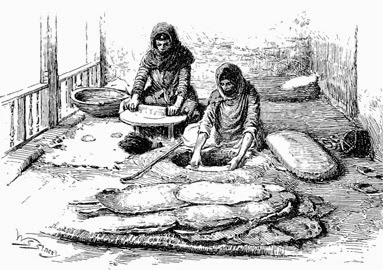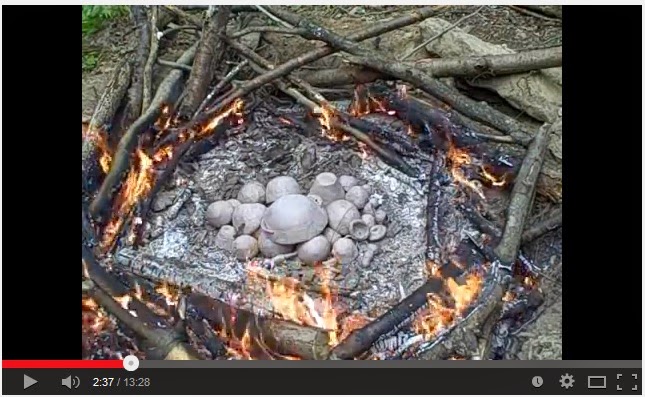However I think that the sculpture could be Celtic and is only classified as Hellenistic because at that time when the sculpture was found, the common opinion was that Celts lived in Panonia, above river Sava. Now we know that Celts actually lived on the whole territory of Serbia and that the border between the Celtic and Greek world was somewhere around the today’s border between Serbia and Makedonia .
I already wrote in my post about Bran - Vran that according to the latest archaeological data, Balkans and particularly the territory of today’s Serbia was a mayor Celtic (Gaulic) stronghold between the 4th and the 1st century BC.
The first meaning, raven, has been preserverd in Breton, Welsh, Irish, Lithuanian, Serbian.
The second meaning, defender, was clearly preserved only in South Slavic languages and you can see the full list of the Serbian bran words related to the meaning defend in the Bran - Vran post. In Celtic languages this meaning is only preserved in the Welsh word "breenhín", and Irish words "branán, braine, braineach" meaning "a prince, a chief, leader" which also exists in Serbian as "branjanj". There is also an Irish name "Bran" with the same meaning which also exists in Serbian as "Brana" and many other variations.
The third meaning, black, is preserved only in Serbian, Croatian, Bosnian and Polish which use vran, vron as a word for black. In Serbia there are hundreds of toponimes with the root "bran", "vran" which you can find in the Bran - Vran post of which one is Vranište.
So knowing all this, it is, I believe, extremely interesting that this possibly Celtic smith figurine was found next to the village whose name has a Celtic root, Vranište.
The village Vranište is located in the South Eastern Serbia, which is known to have a large Vlah population. This population is most often described as "descendants of the Pre-Slavic Roman population", but is it possible that they are descendants of the Pre-Slavic Celtic population? What is also interesting is that during the medieval time, in the foreign reports about the Balkans, the names Vlah and Serb were interchangeable. The South Eastern Serbia is where we find many "Celtic" crosses still being used as village crosses, like this one from the village of Vlasotince which is located near the mountain Vlasina:
The village name Vlasotince comes from Vlaso + tin + ce = Vlah + tin, tun, dun + ce = Celt + fort, town, settlement + small. The mountain name Vlasina comes from Vlah and means the mountain of Vlahs, the mountain of Celts....
Up north from Vlasina, on the confluence of the rivers Sava and Dunav we find Belgrade.
The name of the river Sava comes from sámh + abhainn = still, calm, quiet, tranquil + river, which is perfect description of the river Sava. The name of the river Danube comes from dun + abhainn = fortress, border, surrounding + river or don + abhainn = murky, dark, brown + river. I think that both of these names describe Dunav, Donau quite well. Belgrade is an ancient city, probably one of the oldest permanently settled places in the world. The earliest settlement found on the territory of today's Belgrade is Vinča tell which dates to the 6th millennium BC and after which the famous Vinča culture got its name. But during the Celtic times Belgrade was known as Singidunum. It was recorded that a Celtic tribe, the Scordisci, settled the area in the 3rd century BC. The first evidence of primitive fortification came later in the 3rd century BC, with the settlement of the Scordisci who picked the strategic hilltop at the meeting of the two rivers as the basis for their habitation.
The name Singidun is first attested in 279 BC.The name has Celtic dūn "enclosure, fortress" as its second element.
For Singi- there are several theories, the two most widely circulated being that it is a Celtic word for circle, hence "round fort", or it could be named after the Sings, a Thracian tribe that occupied the area prior to the arrival of the Scordisci. Another possibility is that it is a composite name the first part of which (Sin-gi) means "Old prayer" ("sean guí" in Gaelic), implying that this was originally site of Celtic religious significance, in addition to becoming a fortress (dun). This would also fit in with the fact that one of the biggest Celtic burial grounds found in Europe was found in the area.
Belgrade which was one of the most important strongholds of the Celtic Scordisci empire, which was based on metallurgy. 20 kilometers south from Belgrade there are two villages, Železnik and Vranić. Železnik in Serbian means “iron town” or “iron place” or “iron works” or “smelting plant”. In medieval chronicles the place is described as once being the major iron and silver processing center. Roman sarcophagus belonging to a Decurion from second century was found near the village. This means that Železnik was important enough to have a military garrison stationed in it, probably because it was still an metallurgical center in Roman time. The name of the village Vranić has the same root as the village Vranište where the possibly Celtic figurine of the smith was found. Between the villages of Železnik and Vranić, on another hill is a village of Sremčica where the iron ore was mined and where the old iron mines were discovered...
Now here comes the interesting bit. Both settlements, Železnik and Vranić, have parts called “taraiš” pronounced “taraish” situated just after or beyond the village boundaries.
The Irish word "tar" means "approach, arrive; move, travel, towards, come, return". The Irish word "eis" means "after". The Irish word "abhaile" means home.
Irish expression “tar éis” which is pronounced as "tar aish" means “after” or “beyond”.
So over two thousand years since the Celts "came and left" the Belgrade area, people in two small villages which are located near the ancient iron and silver mines, use Irish expression taraiš - “tar éis” meaning beyond, as a name for land which lies just beyond the village boundaries. And in the same place where people call the land beyond the village boundary taraiš, “tar éis” the people call fences around their houses "taraba". This is taraba.
And this is a reconstruction of a Celtic palisade, fence, taraba:
Is it possible that people who use the Celtic word taraiš, “tar éis” for "the land beyond the village boundary" could use a Celtic word for "fence, the house, village boundary"? The word "taraba" used for the house boundary and probably for the village boundary in the past, could have come from the Irish "tar abhaile" which means to arrive, get home. You know that you have arrived home when you see the fence, the palisade protecting you house, your village.
Official etymology for taraba says that word taraba comes from Turkish tahta - plank + perde - partition, shelter = tahtaperde = taraba??? The word is used in colloquial Turkish to mean fence. But is it possible that this word instead of being a Turkish borrowing in Serbian, is actually Celtic borrowing in both Serbian and Turkish?
What does this all tell us? Is it possible that Celts never left Serbia? Are descendants of Celts still living in Vranište and Vranić all these thousands of years later, except that they are now called Serbs, in the same way the descendants of Celts today live in Ireland where they are now called Irish? Is it possible that villages like Vranište and Vranić actually date from the time of the Celts? And is it possible that the Celtic influence in Serbia started much earlier, not during the 4th and 3rd century BC, but at the beginning of the first millennium BC or maybe even earlier?



































